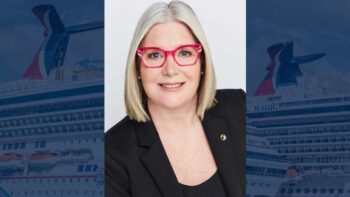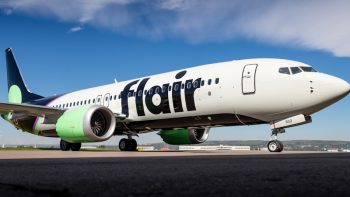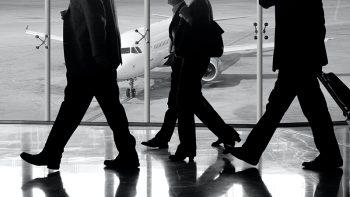
Standing under the fuselage of Air Canada’s first A321XLR at an Airbus assembly facility in Hamburg, we take turns sticking our heads into the plane’s belly to gawk at a shiny new but empty space.
So this is where 13,000 litres of jet fuel will one day be stored in a fixed rear centre tank that makes the XLR an “xtra long range” route opener.
“What you’ve seen there is the so-called wet area where we transport the fuel, the kerosene,” explains Airbus Production Leader Michael Witt, who calls this the heart of the XLR but can’t allow pictures. “And what you also have seen is the systems inside to operate the tank — for example fuel pipes.”
Wearing safety caps, goggles and shoes, we’ve already toured the skeleton of the passenger cabin — technically the centre aft fuselage — marvelling at newly installed windows, insulation blankets, air conditioning pipes, and data and power harnesses.
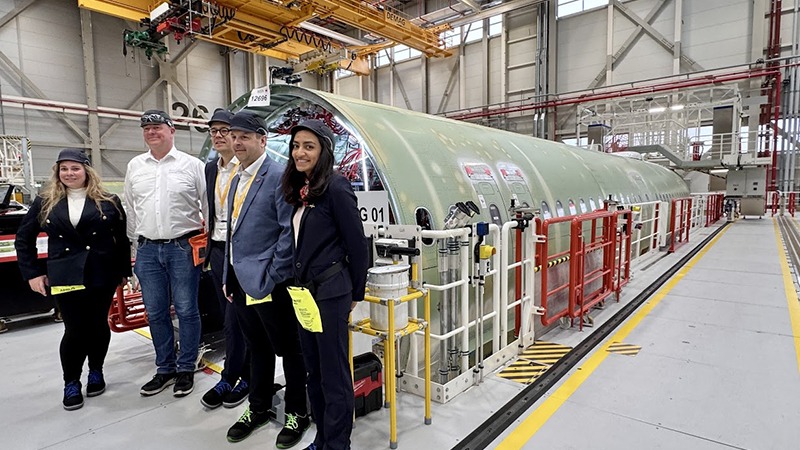
It’s weird to imagine that this very airplane will join Air Canada’s fleet in the first quarter of 2026 and take off for an as-yet undisclosed location by next summer after certification flights and training.
I’ve joined Air Canada and Airbus in Hamburg, headquarters of Airbus Commercial Aircraft in Germany, for a sneak peak of the world’s longest-range, single-aisle plane that’s shaking up transatlantic travel.
The A321XLR can fly up to 4,700 nautical miles (that’s 8,700 kilometres) — 15 per cent more than the A321LR — on non-stop flights of up to 11 hours.
Airbus calls it the lowest risk solution for airlines to open new long-haul routes. Air Canada has ordered 30. This particular one will be leased from Air Lease Corp., but others will be a mix of leased and purchased aircraft.
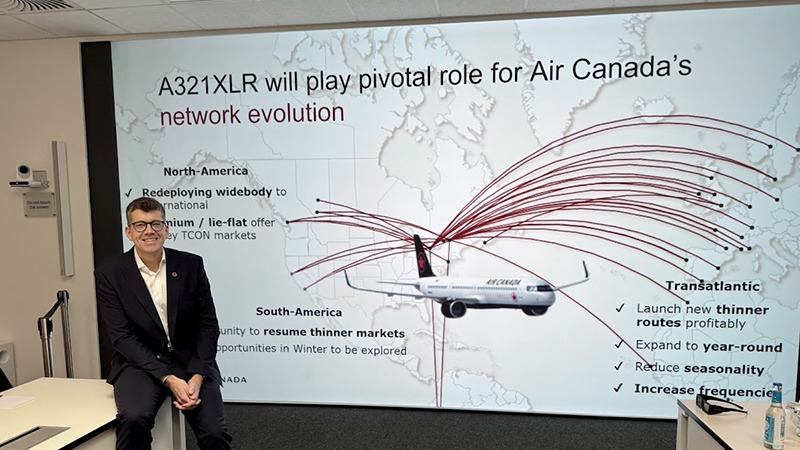
“It’s a completely new product,” Air Canada’s Alexandre Lefèvre, Vice President, Network Planning — North America and Scheduling tells Open Jaw.
“So for a network planner like myself, it can open up way more ideas and possibilities than anything we have in our toolbox today and anything I’ve experienced in my personal life.”
He can’t disclose how many planes will arrive in 2026, only that all 30 will be delivered by 2028.
AC currently has narrow-body, single-aisle aircraft with 137 to 196 seats that don’t go too far but serve North America really well. It also has large, wide-bodied aircrafts with 255 to 450 seats that serve big markets.
The A321XLR, Lefèvre hints, “is coming in at the higher range of the narrow-body single aisle,” but the small aircraft can “go far with good economics” to open or improve markets.
“Before announcing new routes, I feel like it’s important to understand what kind of markets we’re looking at,” he says. There’s a potential transatlantic leisure market to Marrakech, a corporate market for Toulouse (a major Airbus hub), an immigration-based demand for Montreal-Dakar, and a booming market of people visiting friends and relatives that love Montreal-Marseilles.
“When you look at Vancouver and you plot the range of the XLR from Vancouver, you cannot really reach a lot of destinations in Asia — it’s too far. The distance is way too big to go to China for example,” Lefèvre points out. “But now when you place the same range from Toronto and Montreal … you’ve got a lot of cities that are in range of the aircraft and so that’s why it’s more suited for eastern Canada.”
The A321XLR has 12% better RASM (revenue per available seat mile) than the A321ceo and about a 30% lower fuel burn.

Air Canada expects it to play a pivotal role in its network evolution. In North America, it could help redeploy wide-body aircraft to international routes. In South America, there’s an opportunity to resume thinner markets and explore sun destinations in winter. For transatlantic, AC could launch new, thinner markets or make seasonal routes year-round.
Air Canada currently has a mixed fleet of 354 aircraft and plans to add 90 new planes from Airbus and Boeing over the next four years. “Some of them will come to replace other aircraft but the vast majority will be coming for growth,” explains Lefèvre. “We will be growing the airline more than 5% every year.”
The A321XLR will boast the latest Airspace cabin with fixed XL luggage bins, refreshed cabin interiors, better in-flight entertainment, enhanced food and beverage options, and free fast WiFi. It will help showcase AC’s new “glowing-hearted” brand strategy and convey a warm, Canadian feeling.
Our day at Airbus — where 18,000 people work — begins in a high-tech meeting room in the Airspace Customer Definition Centre and continues in a single-aisle aircraft mockup and then the design studio. AC hasn’t yet revealed the LOPA (the design and layout of the cabin interior) for its new planes.
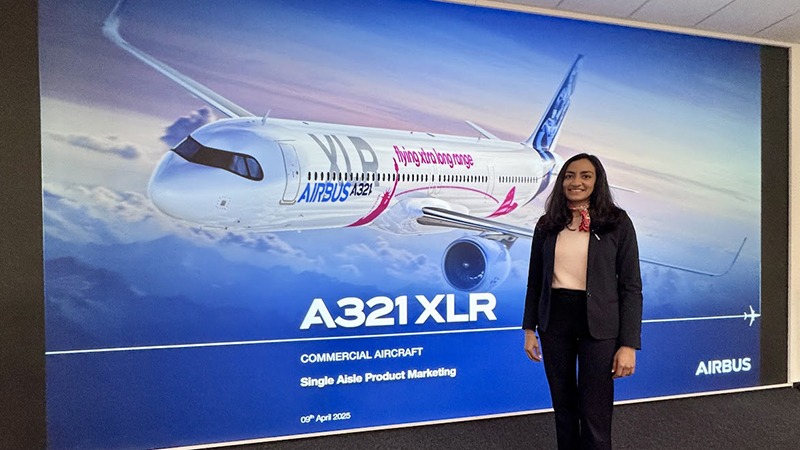
The A321XLR debuted in November with an Iberia Airlines flight from Madrid to Boston. There have already been more than 500 orders from 20-plus customers.
“It’s a game changer for the world,” predicts Suchithra Raman, Single Aisle Marketing Manager, Commercial and International for Airbus.
After lunch, we visit three hangars to see the skeleton assembly for the 320 Family of aircraft, the XLR equipment installation area and one of four final assembly lines.
For Lefèvre, a self-confessed “big airline geek,” it’s a chance to finally see an aircraft that has been a “paper and Excel exercise” until now. “It’s getting more real, so it’s getting almost emotional now,” he admits.
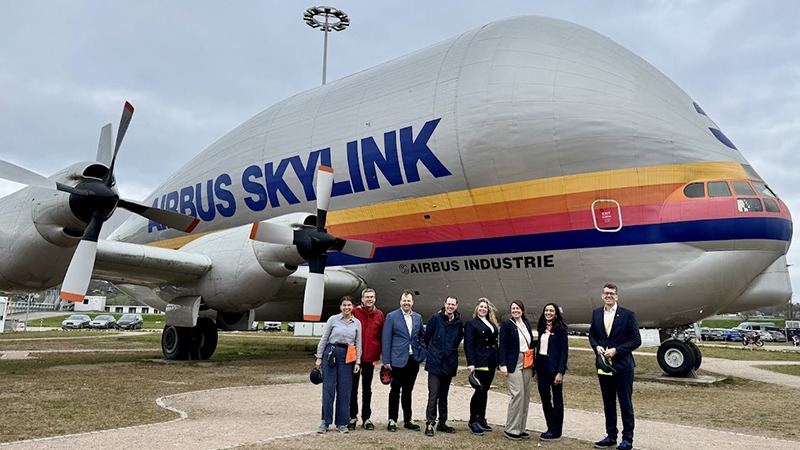
We wrap up with a group photo at a vintage Super Guppy aircraft and a visit to a FAL (final assembly line) — both are actually stops on popular public factory tours.
It’s hard to imagine, but the fuselage that we poked our heads into will soon be brought to a hangar like this and be attached to its wings and cockpit. Finally, it will be dolled up with Air Canada branding and colours, and then be ready for a test flight, customer acceptance flight and delivery.

